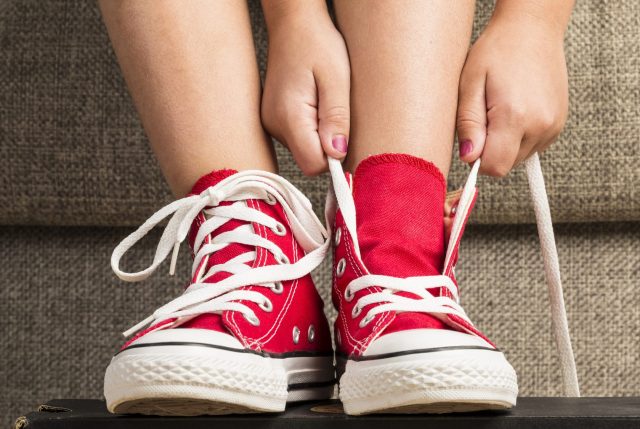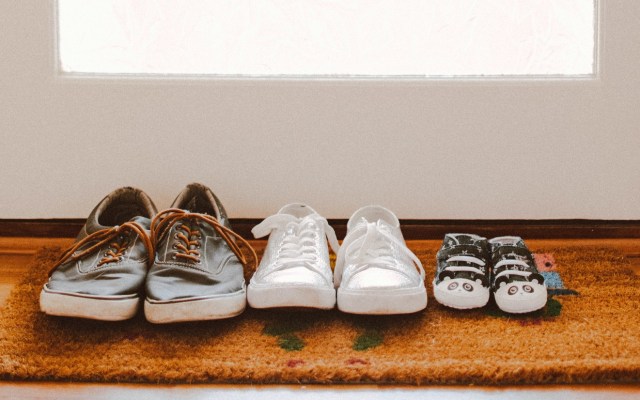Perhaps some people tread only on rose petals when they walk outdoors, but for most of us—particularly with kids—the stuff on the bottom of our shoes is pretty funky. Environmental chemists with a decade of experience examining contaminants in homes agree: leaving your shoes at the door is the way to go. Since approximately a third of all matter building up inside your home comes from outside—including hospital-associated germs and cancer-causing toxins—taking your shoes off before entering is one of the best ways you can prevent tracking these unwanted guests in.

In a recent collaboration with CNN, 360 Dust Analysis notes that “people spend up to 90% of their time indoors, so the question of whether or not to wear shoes in the house is not a trivial one.” As a result, we should be more aware of what’s lurking in our household dust, because that’s exactly where we’re experiencing the most prolonged exposure to environmental contaminants.
Collecting vacuum dust samples from citizens around the world, 360 Dust Analysis has measured and assessed the risk of exposure to a range of harmful substances found inside homes. They’ve found genes that make bacteria resistant to antibiotics, microplastics, PFAS or “forever chemicals,” because of their tendency to remain in the body and not break down, and even radioactive elements—among other things.
According to the 360 Dust Analysis website “A strong focus of our work has involved assessing levels of potentially toxic metals (such as arsenic, cadmium and lead) inside homes across 35 nations. These contaminants — and most importantly the dangerous neurotoxin lead — are odorless and colorless. So there is no way of knowing whether the dangers of lead exposure are only in your soils or your water pipes, or if they are also on your living room floor.”

While what you drag in on the bottom of your shoe sounds like it can be full of some really awful stuff—like lead, which is often found in the dirt in your own backyard—there are experts like Jack A. Gilbert, a professor in the department of pediatrics and Scripps Institution of Oceanography at the University of California, San Diego and the author of the book “Dirt is Good,” who told The New York Times in 2019 that the likelihood of getting sick from our shoes is “infinitesimally small as to almost be unwarranted.”
He went on to say that there are theories suggesting that bringing elements of the outdoors indoors could help stimulate immune systems, particularly in children. “In the first year of life, physical interaction with a dog can reduce a child’s likelihood of developing asthma by 13 percent, while interactions in a barn or farm can reduce it by 50 percent,” he said. The good doctor makes a compelling point, but kids don’t only stay indoors (unless 2020 repeats itself, and we earnestly hope it does not). So won’t they encounter enough dirt in the great outdoors that they don’t need to track it into our homes?
As with most things to do with making good parenting decisions, it boils down to “how much poop do you really want to put up with?” A Wall Street Journal article pointed out that E.Coli—the bacteria related to poo that causes dismaying digestive upheaval—is on the bottom of 96% of a sample population’s shoes. But even if it’s expected to be there, do you really want to track in the poop bacteria—or any other funkiness—when the alternative is to simply leave your kicks by the back door?
RELATED STORIES
5 Simple Ways Parents Can Help Boost Their Kid’s Immunity
Tips & Tricks to Treating Seasonal Allergies in Children
6 Non-Toxic Cleaning Products to Buy Now











